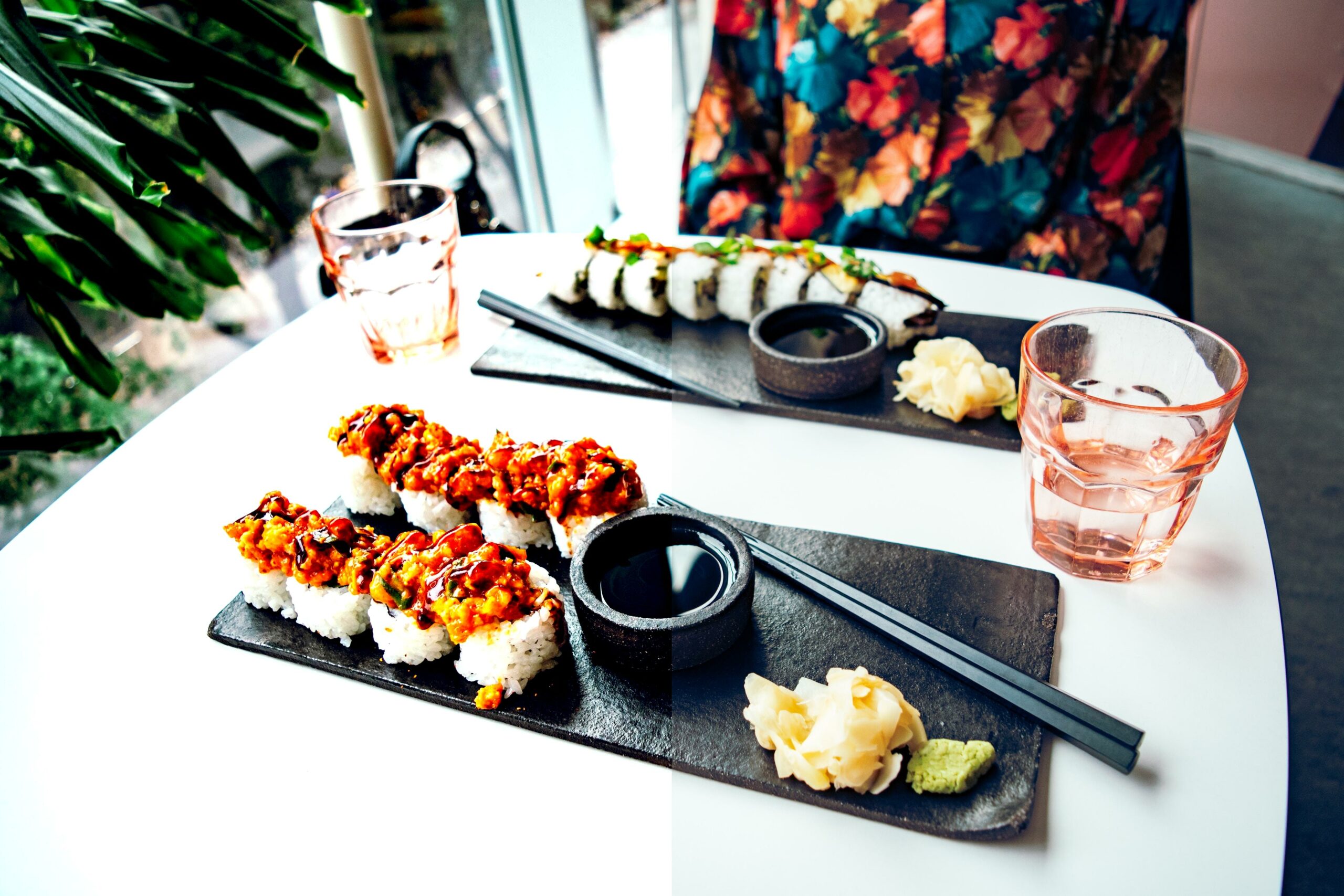Prepare to take a deep dive into the mesmerizing world of sushi in Japan as we unearth 10 fascinating facts that will leave you awestruck. Brace yourself for an extraordinary culinary journey that goes beyond the ordinary, where every bite of this delectable dish is steeped in history, tradition, and mind-blowing techniques. From the mesmerizing artistry behind its creation to the surprising regional variations that will tantalize your taste buds, join me as we unravel the secrets and shed light on the captivating allure of sushi in Japan. Prepare to be amazed, astonished, and utterly captivated by the extraordinary facts that lie beneath the surface of this beloved cuisine.
Facts About Sushi in Japan
Sushi, the iconic Japanese dish, is a culinary masterpiece that has captured the hearts and taste buds of people around the world. While many are familiar with sushi, there are several fascinating facts about this delicacy that remain relatively unknown. Join me as we unearth the secrets behind sushi in Japan and discover ten intriguing facts that will undoubtedly pique your interest.
1. Sushi: A Global Sensation
Although sushi has gained tremendous popularity outside of Japan, it might surprise you to learn that it is not the most consumed dish within the country itself. The true favorite among the Japanese is sashimi. While sushi holds a special place in the hearts of many, it is important to recognize the significant role that sashimi plays in Japanese cuisine.
Key Point:
Sushi may be internationally renowned, but sashimi holds the crown of popularity within Japan.
2. The California Roll Conundrum
When it comes to sushi, it’s crucial to understand that there are regional variations that may differ from what you’re accustomed to. One notable example is the California roll, which is not commonly found in Japan. While it has gained popularity in other parts of the world, the California roll is a testament to how creativity can transcend cultural boundaries and reinvent traditional culinary practices.
Key Point:
In Japan, don’t expect to find the California roll as readily as you might elsewhere.
3. Breaking the Freshness Myth
We often associate sushi with the perception that it must be consumed immediately for the ultimate freshness. However, there is a careful balance between aging and consuming sushi that truly highlights its flavors. Some types of sushi, such as aged fish, are intentionally prepared to bring out unique and complex flavors, challenging the notion that fresh is always best.
Key Point:
Contrary to popular belief, aged sushi offers a distinct taste that goes beyond the realm of freshness.
4. The Art of Speedy Sushi
While sushi is meant to be savored, it is also customary to eat it quickly. Sushi chefs meticulously craft each piece, ensuring an optimal balance of flavors that demands immediate appreciation. By savoring the intricate combination of fish, rice, and condiments in one bite, you can fully appreciate the culinary expertise behind each morsel of sushi.
Key Point:
To truly experience the mastery of sushi, savor its flavors swiftly.
5. Sushi: An Occasional Delight
While sushi may be incredibly enticing, it is not traditionally an everyday food in Japan. Historically, sushi was reserved for special occasions and celebrations due to the complex and time-consuming nature of its preparation. This tradition has carried onto modern times, allowing sushi to retain its exquisite allure and exclusivity.
Key Point:
In Japan, sushi holds a special place in the realm of rare and exceptional culinary experiences.
6. The Origins of Sushi
Although sushi has become synonymous with Japan, its origins can be traced back to ancient China. Originally, sushi was a means of preserving fish by fermenting it with rice and salt. Over time, this preservation technique evolved, and Japan refined it into the sushi we know today, characterized by the careful artistry and freshness of its ingredients.
Key Point:
Sushi may have Chinese roots, but Japan has transformed it into a culinary art form.
7. The Pungent World of Funazushi
When we think of sushi, delightful flavors come to mind. However, there is one type of sushi in Japan that challenges our taste buds: funazushi. Considered the oldest type of sushi in Japan, funazushi is fermented and made from a type of fish known as nigorobuna. The resulting aroma and flavor are undoubtedly intense, making it an acquired taste for adventurous sushi connoisseurs.
Key Point:
Funazushi offers a unique, albeit pungent, exploration of sushi’s rich historical roots.
8. Nigiri Sushi: A Stroke of Genius
Nigiri sushi, a staple in Japanese sushi bars, is a testament to the innovative spirit of sushi. Hanaya Yohei, a legendary Edo-period chef, is credited with inventing nigiri sushi. By combining vinegared rice with a fresh slice of fish, Hanaya Yohei revolutionized sushi, introducing a harmonious blend of flavors and textures that awakens the palate with every bite.
Key Point:
Nigiri sushi, invented by Hanaya Yohei, showcases the ingenuity and creativity within the world of sushi.
9. From Trash to Treasure: The Evolution of Sushi Rice
Believe it or not, sushi rice was once considered a byproduct or even discarded as trash. It was initially used as a filler to preserve fish and increase its shelf life. However, as sushi became more sophisticated, chefs realized the potential of sushi rice, perfecting its seasoning and cooking techniques to complement the delicate flavors of the fish.
Key Point:
Sushi rice went from being overlooked to being appreciated as an essential component in creating the perfect sushi experience.
10. Sushi’s Journey from Devastation to Popularity
The Great Kanto earthquake of 1923 devastated Tokyo, causing widespread destruction and loss of life. In its aftermath, small sushi stalls became a symbol of recovery and revival, providing much-needed sustenance to the community. The resilience of these sushi vendors, combined with the convenience of portable sushi, led to the widespread popularity of sushi throughout Japan.
Key Point:
Sushi became a beacon of hope and rebirth in the aftermath of the Great Kanto earthquake, propelling its popularity across Japan.
In uncovering these fascinating facts about sushi in Japan, we come to appreciate the deep cultural roots and culinary mastery that underpin this beloved dish. From its Chinese origins to the invention of nigiri sushi and the regional variations that continue to captivate our palates, sushi truly embodies the spirit of exploration and innovation. So, the next time you indulge in a delectable piece of sushi, reflect on the captivating stories and traditions that make it not just a meal, but an experience.
Now that we’ve delved into the secrets and revelations surrounding sushi in Japan, it’s time to embark on your own sushi adventure. Whether you’re a seasoned sushi enthusiast or just beginning to explore its wonders, let the flavors and tales of each piece transport you to the heart of Japanese culinary heritage.
Sushi, the ever-popular Japanese cuisine, has a rich history and fascinating facts surrounding its creation and consumption. If you are a fan of this delectable dish or simply curious about its origins, you’ll definitely want to check out these intriguing facts about sushi. From its humble beginnings as a way to preserve fish to its now global popularity, sushi has truly become a cultural phenomenon. So, why wait? Dive into the world of sushi by clicking here: facts about sushi and uncover a whole new appreciation for this mouthwatering masterpiece.
Facts about sushi in Japan are not limited to what is commonly known. Dive deeper into the world of sushi and uncover some lesser-known facts about this beloved cuisine. Did you know that sushi was originally a street food in Japan? Discover intriguing facets of sushi in Japan that will open your eyes to its rich history and cultural significance. Moreover, sushi not only satisfies your taste buds but also brings numerous health benefits. Explore the health benefits of sushi in Japan and learn how this traditional dish can contribute to your overall well-being. If you are fascinated by Japanese cuisine or simply want to expand your knowledge, these links will take you on an exciting journey:
- lesser-known facts about sushi in Japan
- intriguing facets of sushi in Japan
- health benefits of sushi in Japan
Click on each link and discover the captivating world of sushi in Japan!
Interesting Facts About Sushi in Japan
[youtube v=”DXAbzozVCP0″]
Sushi is a popular Japanese food that is often associated with sushi rolls. However, in Japan, it is commonly enjoyed as just raw fish over rice. The price of sushi can vary, ranging from as cheap as 1 US dollar per piece to around 50 dollars, depending on the quality and who made it. Both the fish and the rice are equally important in creating a delicious sushi dish. Fresh fish paired with bad rice will not taste good.
In Japan, it is culturally accepted to eat sushi with your hands, although you can also use chopsticks if you prefer. It is important to note that using soy sauce with gummies is not recommended.
Now, let’s explore some additional interesting facts about sushi in Japan:
1. Sashimi is More Popular Than Sushi in Japan
While sushi is commonly associated with Japanese cuisine, sashimi actually holds more popularity in Japan. Sashimi refers to thin slices of raw fish or seafood served without rice. It is a delicacy that allows the natural flavors of the fish to shine.
2. California Roll is Not Commonly Found in Japan
Contrary to popular belief, the California roll is not commonly found in Japan. This type of sushi roll was actually created in the United States and is more popular in Western countries.
3. Aged Sushi Offers Unique and Complex Flavors
Aged sushi, also known as matured sushi, is a type of sushi that is intentionally aged for a certain period of time before being served. This process allows the flavors to develop and intensify, resulting in a unique and complex taste experience.
4. Sushi Should be Eaten Quickly to Fully Appreciate its Flavors
To fully appreciate the flavors of sushi, it is recommended to eat it quickly. Sushi is best enjoyed when the rice is still warm and the fish is fresh. Eating it promptly ensures that you don’t miss out on the delicate balance of tastes.
5. Sushi is Traditionally Reserved for Special Occasions in Japan
In Japan, sushi is often considered a special meal reserved for celebrations and important occasions. Its high-quality ingredients and meticulous preparation make it a symbol of luxury and elegance.
6. Sushi Originated in China and was Refined by Japan
Although sushi is heavily associated with Japan, its origins can be traced back to China. It was in Japan, however, that sushi evolved and took on its distinct style and techniques, particularly during the Edo period.
7. Funazushi: A Pungent and Fermented Type of Sushi in Japan
Funazushi is a unique type of sushi that originates from Lake Biwa in Japan. It is made by fermenting locally caught funa fish with rice and salt for an extended period. The result is a pungent and flavorful sushi that is an acquired taste for many.
8. Nigiri Sushi: Invented by Hanaya Yohei
Nigiri sushi is a popular variety of sushi that consists of vinegared rice topped with fresh fish. It was invented by Hanaya Yohei, a sushi chef from the early 19th century. Nigiri sushi showcases the simplicity and harmony of flavors that sushi is known for.
9. Sushi Rice: Once Considered a Byproduct
Believe it or not, sushi rice was once considered a byproduct or even discarded as trash. It wasn’t until the 17th century that sushi chefs discovered the potential of this seasoned rice and began using it together with fresh fish.
10. Sushi Became Popular in Japan After the Great Kanto Earthquake
Following the devastating Great Kanto Earthquake in 1923, sushi played a significant role in the recovery and revival of Japan. Served as street food, sushi gained popularity for being accessible and symbolizing hope for a brighter future.
In conclusion, sushi in Japan is not just limited to sushi rolls but also includes the enjoyment of raw fish over rice. The price can vary depending on quality, and both the rice and fish are equally important in creating a delicious dish. While sashimi is more popular than sushi in Japan, aged sushi offers unique flavors, and nigiri sushi is a creation of Hanaya Yohei. Sushi rice has a fascinating history, and sushi itself has played a significant role in Japan’s recovery and revival. So, next time you indulge in sushi, remember the rich cultural heritage and fascinating facts behind this beloved Japanese cuisine.
“Sushi is not just a meal; it’s an exquisite art that reflects centuries of culinary refinement and cultural significance.”
FAQ
Q: Is sushi the most famous Japanese dish?
A: Yes, sushi is the most famous Japanese dish outside of Japan and one of the most popular dishes among the Japanese.
Q: Is sashimi more popular than sushi in Japan?
A: Yes, sashimi is actually more popular in Japan than sushi.
Q: Are California rolls available in Japan?
A: No, California rolls are not readily available in Japan.
Q: Is fresh always the best when it comes to sushi?
A: No, fresh is not always best when it comes to sushi.
Q: Should sushi be eaten quickly?
A: Yes, sushi should be eaten quickly for the best dining experience.












